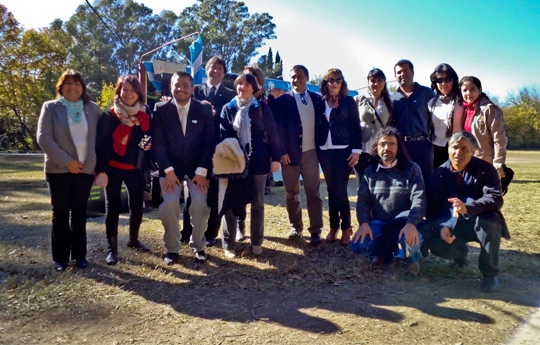Technology Transfer Office
“With this methodology and software we can make smarter decisions for health and quality of life”
Investigators from CONICET and the National Technological University (UTN) developed a software system to evaluate housing risk and generate models for healthier dwellings.
(For Spanish version click here)
According to the World Health Organization, healthy dwelling provides protection against avoidable damage, poisonings, thermal and other types of exposure that could generate diseases or chronic conditions. It helps social and psychological development and promotes the access to workplaces, education, services and places of entertainment to foster good health.
María del Carmen Rojas has a PhD in Demography and is an independent investigator of CONICET at the Institute of Geohistorical Research (IIGHI, CONICET-UNNE) is leading a project that promotes the use of a methodology associated to a software system that identifies the social vulnerability and dwelling variables to determine health risk.
Currently, the system has been transferred to the local government of Villa del Totoral, in the province of Córdoba in order to be studied together with the population. The identification of problems can in turn stimulate the discussion of practical strategies to solve those difficulties.
What does this type of development propose?
This methodology to determine Dwelling Risk for Health (DRVS) and its associated software Risk, Dwelling and Health (RVS v 2.1) is useful to determine the housing risk in terms of health. The combination allows examining the population strategies in terms of unhealthy dwelling taking into account the resources the community has to face the problem. That is to say, it identifies the difficulties the population is experiencing and seeks viable solutions in accordance with each community’s structure.
Which factors are analyzed?
This task is within the framework of research-development-innovation (R+D+i). From this point of view, we address the concept of risk considering the economic, social, political, cultural variables, to name some. The importance of this type of focus lays on the elaboration of theoretical design and its conversion to measurement instrument and tolls such as softwares, that manage to capture reality and its complexity. During the following diagnosis phase, the emphasis is placed on the involvement of the community, social actors and administrations with decision-making power. The goal is to evaluate, design and implement actions that allow to repair and prevent risk situations in dwellings, community, environments and at the same time promote healthy housing.
What is meant by healthy dwelling?
Considering the definition of the World Health Organization, healthy dwelling is a good strategy to prevent and promote environmental health, which is a socially determined and multidimentional process. In this context, individual facts are considered as part of family and communitarian processes.
What would be the impact of this diagnosis over users’ life quality?
As communities can identify their strengths and weaknesses, they can improve their capacity to act and resolve problems through collective actions. With this software system, people will be able to make smarter decisions for health, life quality, housing and communities.
How does the programme work?
This software system was elaborated as a tool for capturing information, calculation and transfer support to estimate the dwelling’s risk for health. Besides, five artificial neural networks were developed. They work interconnected to estimate the risk from exposition sub-indices, social fragility and resilience that constitute social vulnerability of dwellings and housing threat: exposition, social fragility and resilience.
What is an artificial neural network?
It is an abstraction, a computational model based on the architecture of the biological nervous system and artificial intelligent techniques which, in this case, are used to generalize the relationship that exists between the variables value and the value at risk indicated by experts. This network learns through the processing of several examples of information input and output and predicts the relationship between input data and the output result. It could be stated that the network captures experts’ experience and can behave as one: when presented with unknown input data, it will calculate a reasonable output, such as an expert would do.
How is this information then used?
It serves as the basis for decision making of environmental health administration and to improve life quality. It works in two ways: on the one hand this system reproduces simulations to study the effects in health risk that could produce concrete actions which are under consideration and modify variable values of the red input. On the other hand, once administration measures are taken, that would allow assessing its result.
Once the diagnostic methodology is transferred, how does the project continue in the case of Villa del Totoral, Cordoba?
From April 9th to 11th “The First Meeting of the Development of the Dwelling’s Guide and Health Guidelines of the World Health Organization” took place. During May 6th to 8th the investigators worked in Villa del Totoral with personnel from different areas such as social and environmental sciences schools for the inclusion of the DRVS conceptual basis in the process of highschool young students’ training. Besides, community doctors programme members were trained. With the transfer of this methodology to the local government of Villa del Totoral, we seek to move forwards towards DRVS to develop a system of information that complies with the characteristics that define it as an instrument for knowledge, conscience and social administration within the frame of a local integrated risk management.
Maria Del Carmen Rojas holds a PhD in demography from the National University of Córdoba (2006) and a postdoctoral degree in Subjectivity at the same University.
The working team for this development includes the engineers Juan Carlos Vázquez and Julio Javier Castillo (UTN).
By Jimena Naser.
